About halfway up the coast of Oregon is the little town of Florence. The approach from the south crosses the Siuslaw (Sigh-YOO-slaw) River on an historic draw bridge which is still in use today. Amazingly, Oregon has over 200 historic bridges. Many of the ones along the coast were designed by Conde McCullough. His bridges are not just functional, but architecturally elegant. I love how each bridge is so unique in design.

Near the bridge is Old Town Florence, situated along the riverbank.The old pilings have now become landing places for birds of all types.
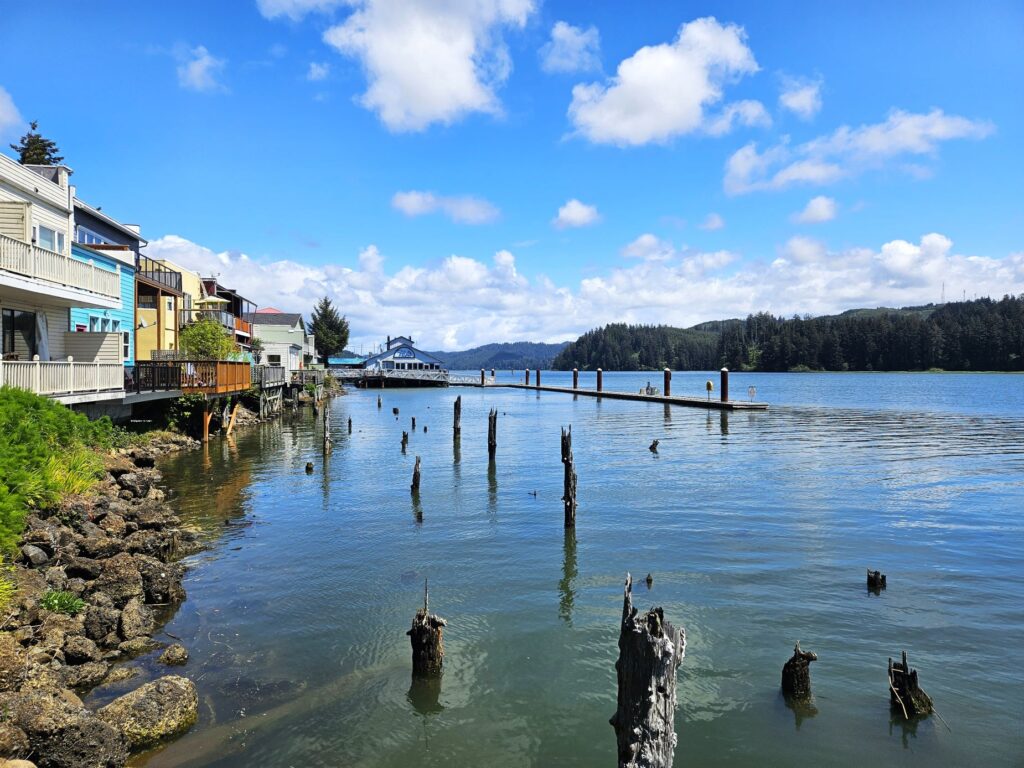
We walked along Bay Street, along the river. It has many interesting small shops and restaurants. We got some chocolate-covered toffee in a little candy store and strolled under the Japanese Cherry trees that were in bloom.
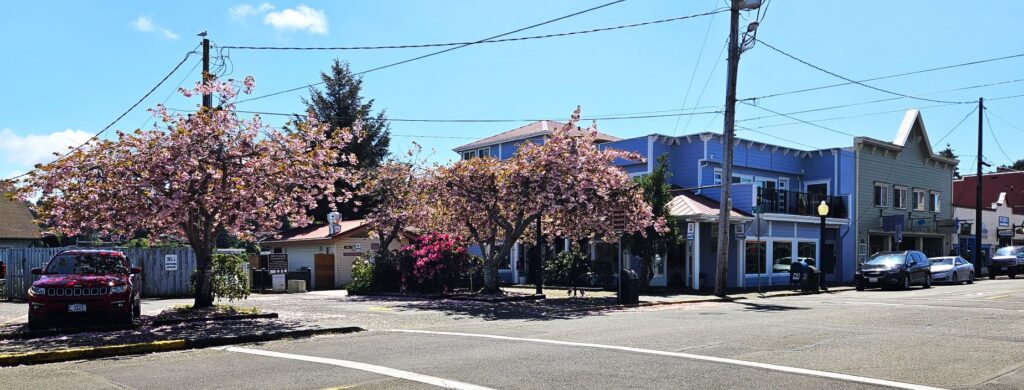
At the end of Bay Street is a small city park with a view of the Siuslaw Bridge. In the park are storyboards of native plants, birds and the history of the Siuslaw Bridge, as well as this painted seal. Other painted seals can be found throughout the city.
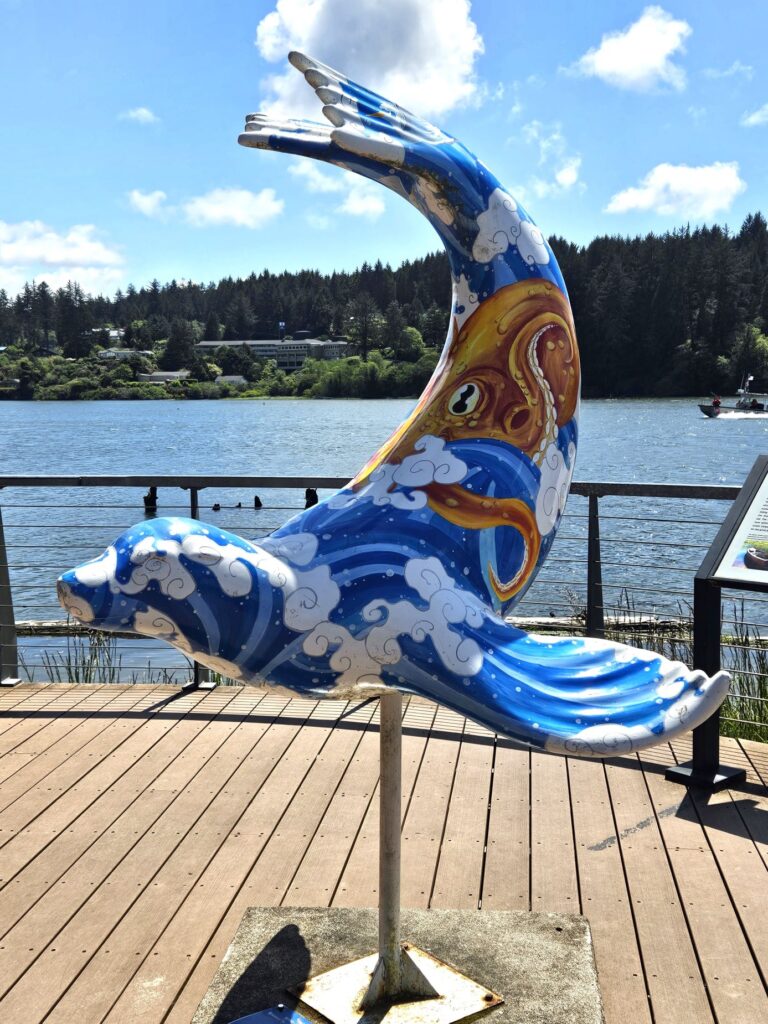
Later, we drove north along Highway 101. The Sea Lion Caves are a popular attraction for visitors. They are the largest sea caves in the USA. However, it’s a tourist trap and a little pricey, so we drove further north and saw some sea lions at one of the roadside viewpoints for free.
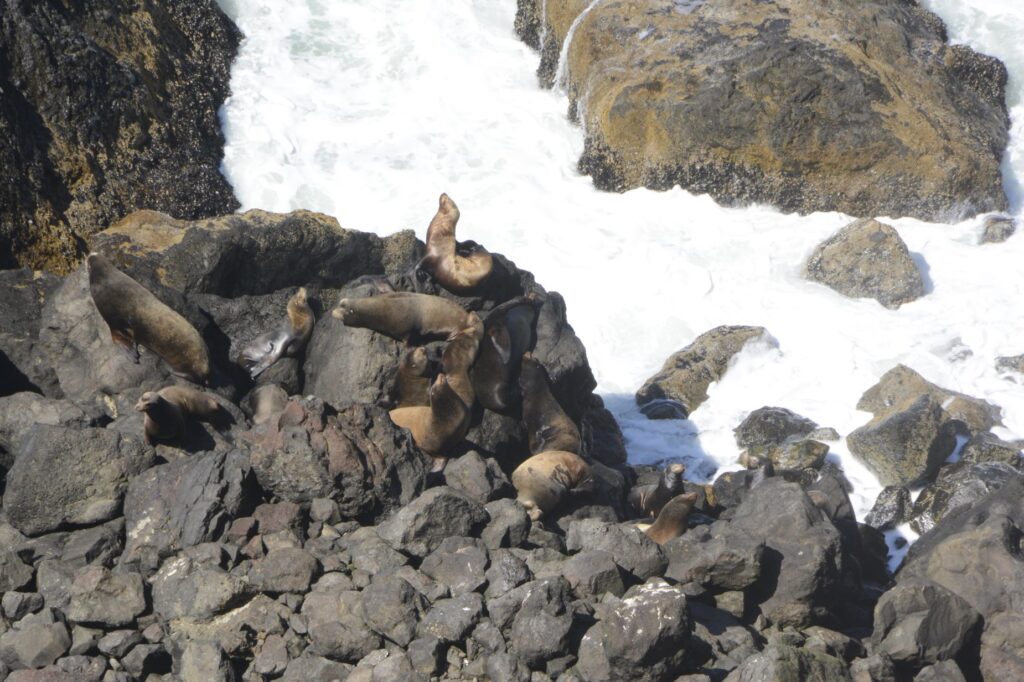
At the same place, we saw hundreds of birds on the rocks.
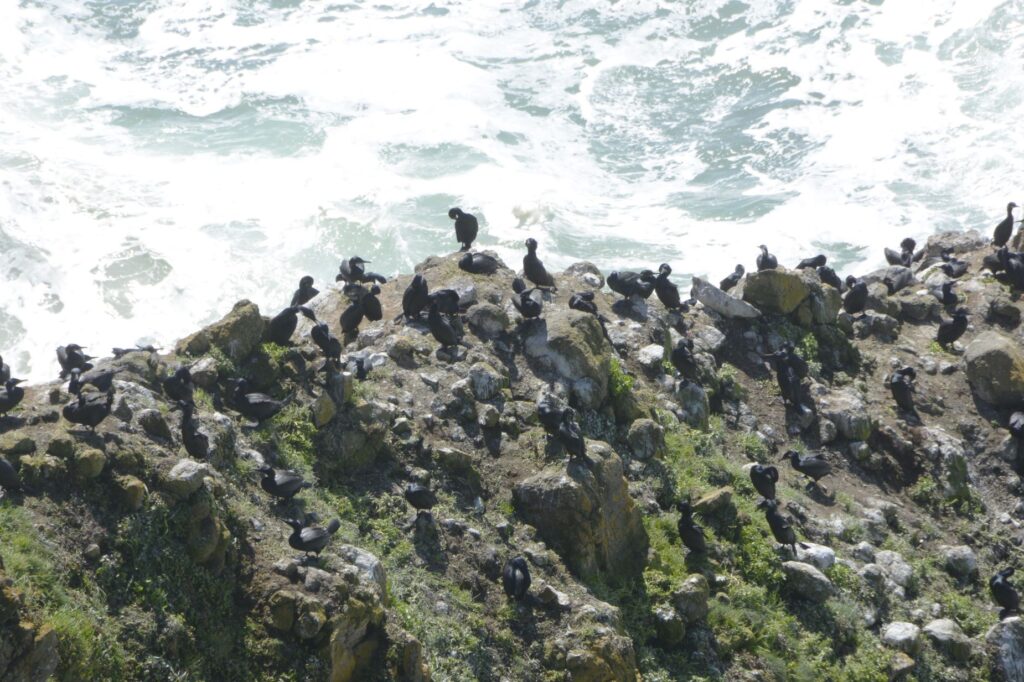
The gorse bushes were in full bloom. Whole hillsides were yellow with their blooms.
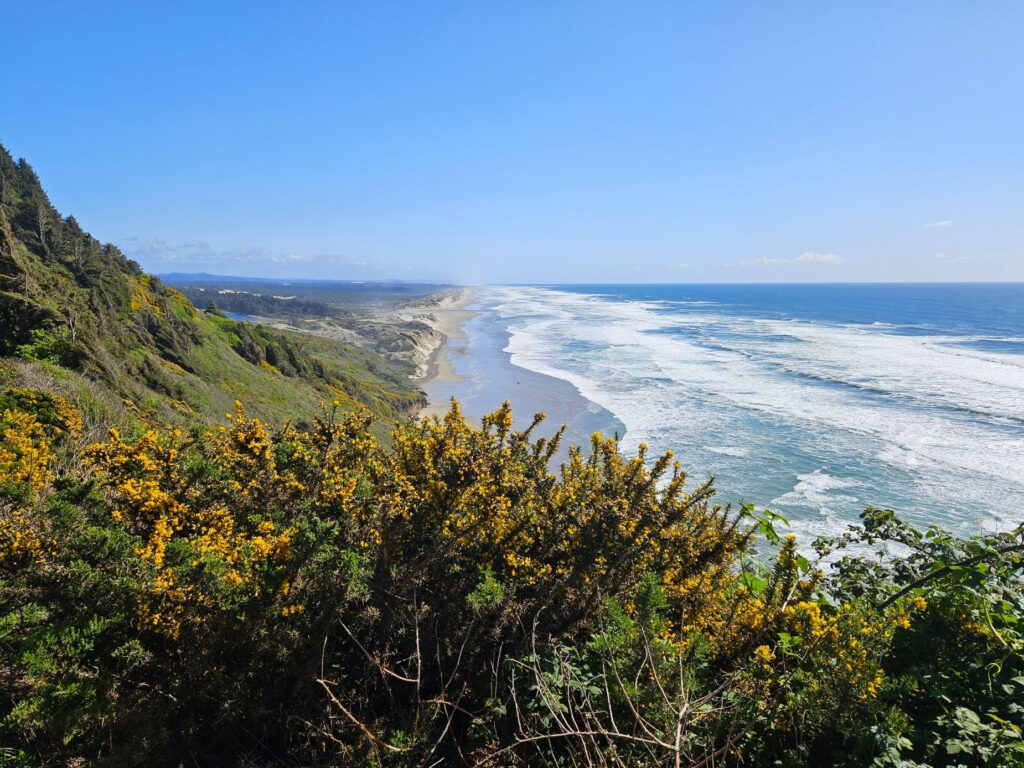
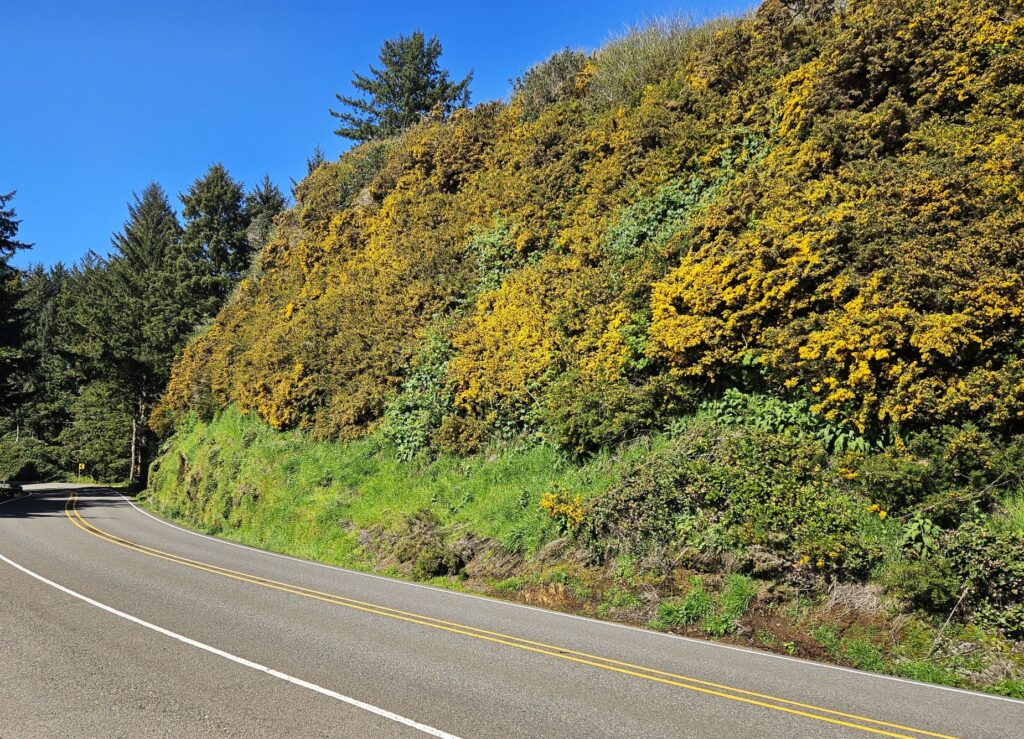
From this roadside view point, we could see Heceta Head Lighthouse. This is one of my favorite Oregon lighthouses because of this view.
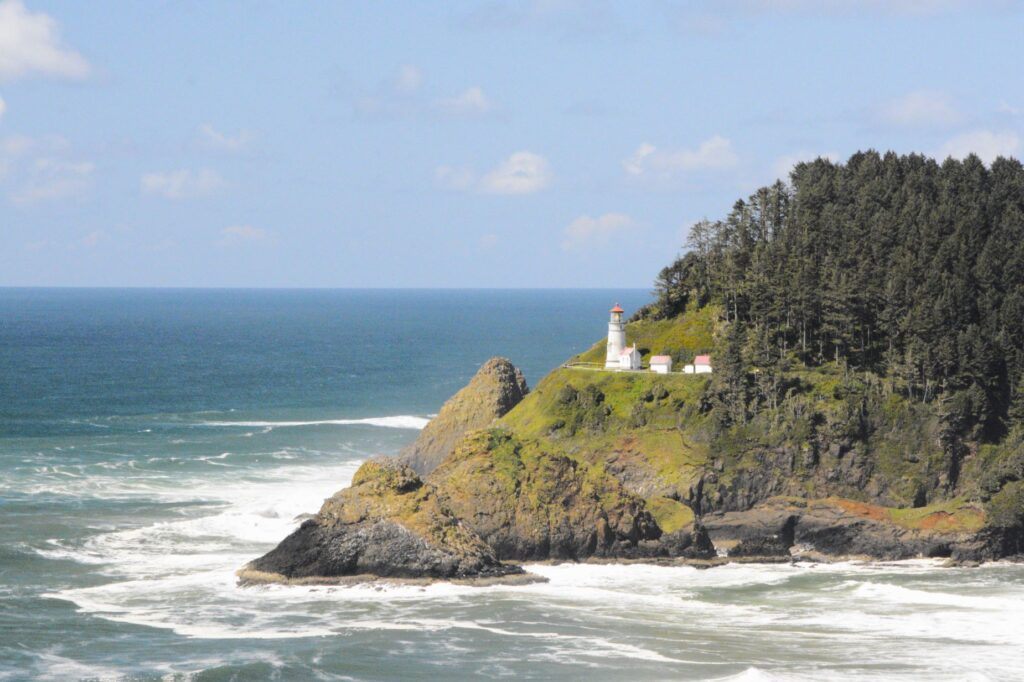
To get to the lighthouse on Highway 101, you go through a tunnel (Arch Cape Tunnel) and over another historic bridge (Cape Creek Bridge). There is a side road leading down and under the bridge to the beach area and parking lot.
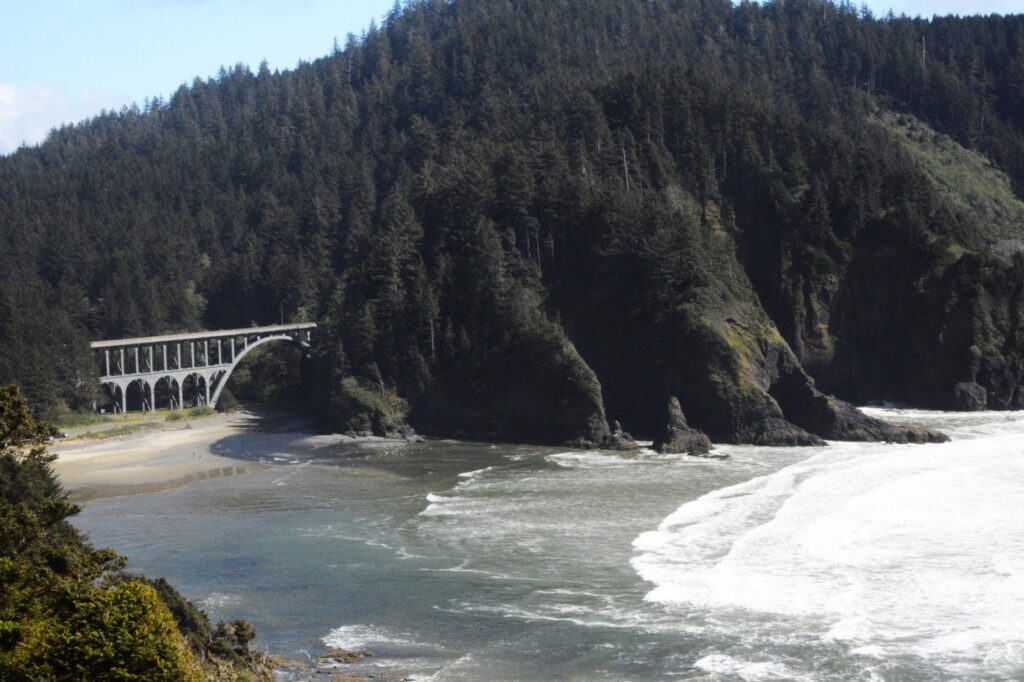
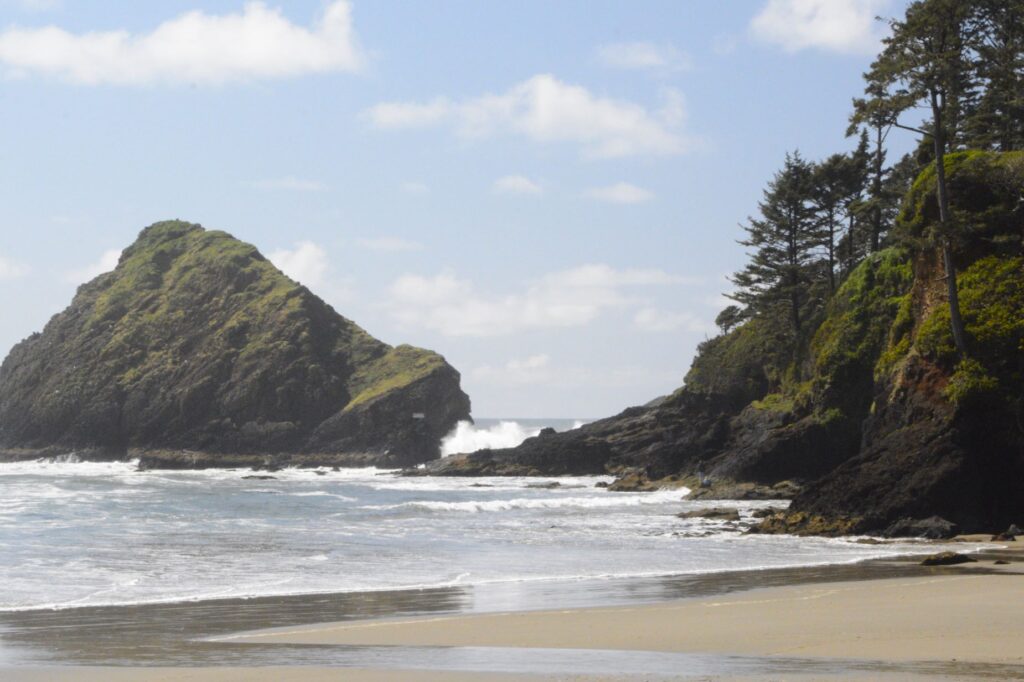
This large rock held my attention for several minutes as I enjoyed watching the waves crash against the sides. Walking up the pathway to the lighthouse, I got a better view from above.
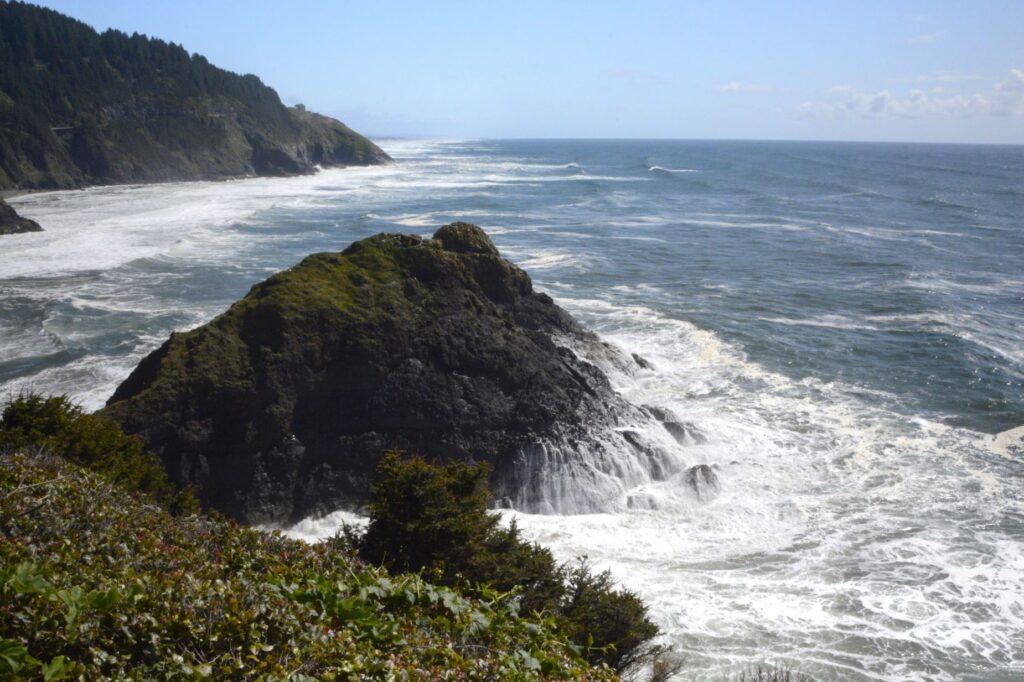
Heceta Head Lighthouse is one of several lighthouses along the rocky Oregon coastline. Built in 1893, its light is visible for twenty-one miles. It was built to fill in a ninety mile gap between two other lighthouses.
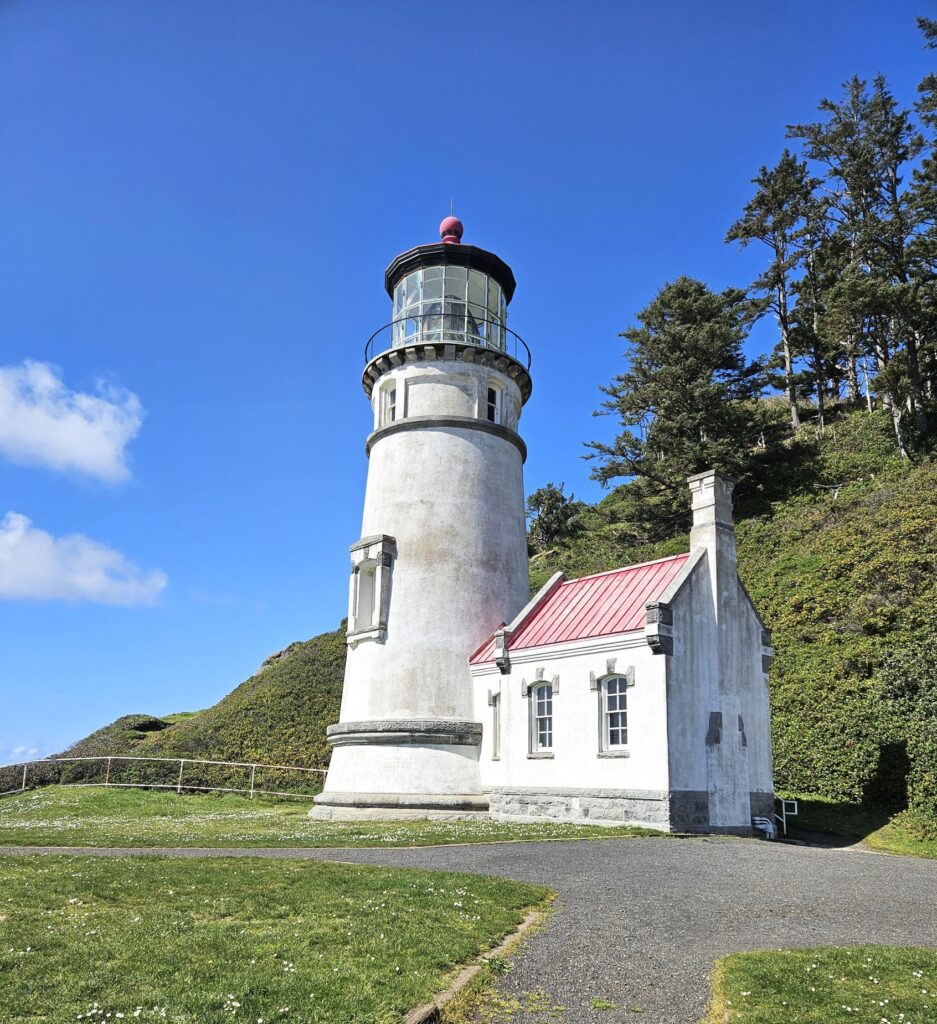
After the lighthouse was automated and the lighthouse keepers moved away, the lighthouse keepers’ duplex was leased by Lane County Community College for classrooms for a satellite campus starting in 1970. They removed a wall separating the two dining rooms to make a classroom area. The students slept on bunk beds in the second story rooms. Imagine being a student and enjoying the Oregon Coast while taking classes!
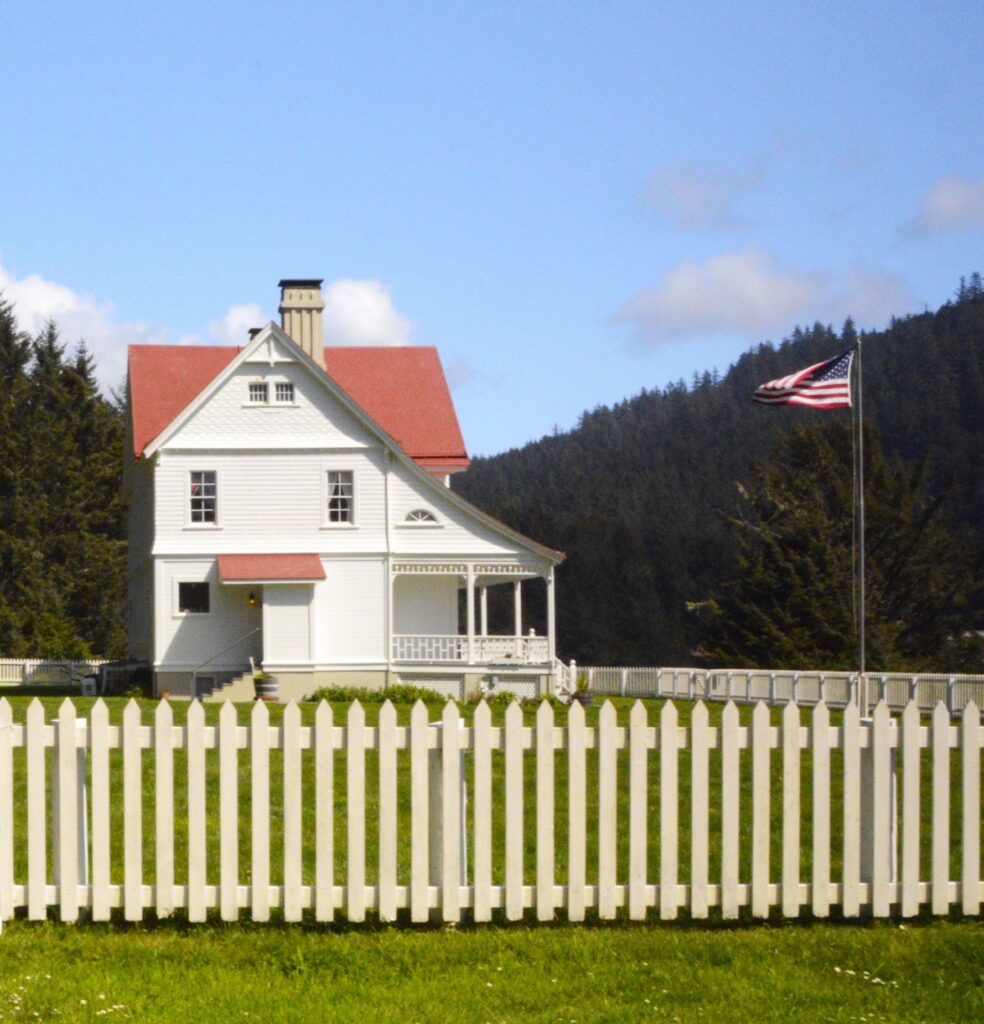
One of the pleasures of traveling in Oregon during the spring is seeing all the beautiful flowers in bloom. Pacific Rhododendrons grow wild and come into bloom in April and May. Florence, Oregon, has an annual rhododendron festival. There were one or more in just about every campsite in our campground in Cloverdale, Oregon. They like disturbed habitats such as roadside embankments and recently deforested wildlands.
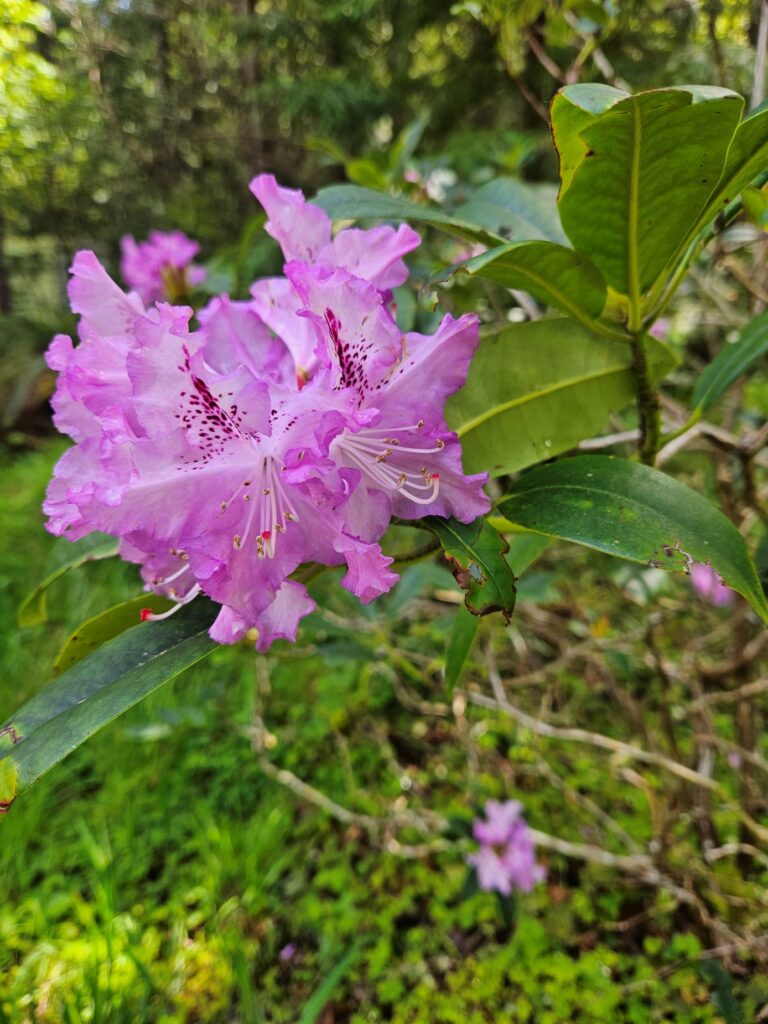
Azaleas are also plentiful and have beautifully colored blooms. Azaleas are rhododendrons, but not all rhododendrons are azaleas. I admit, I can’t tell the difference.
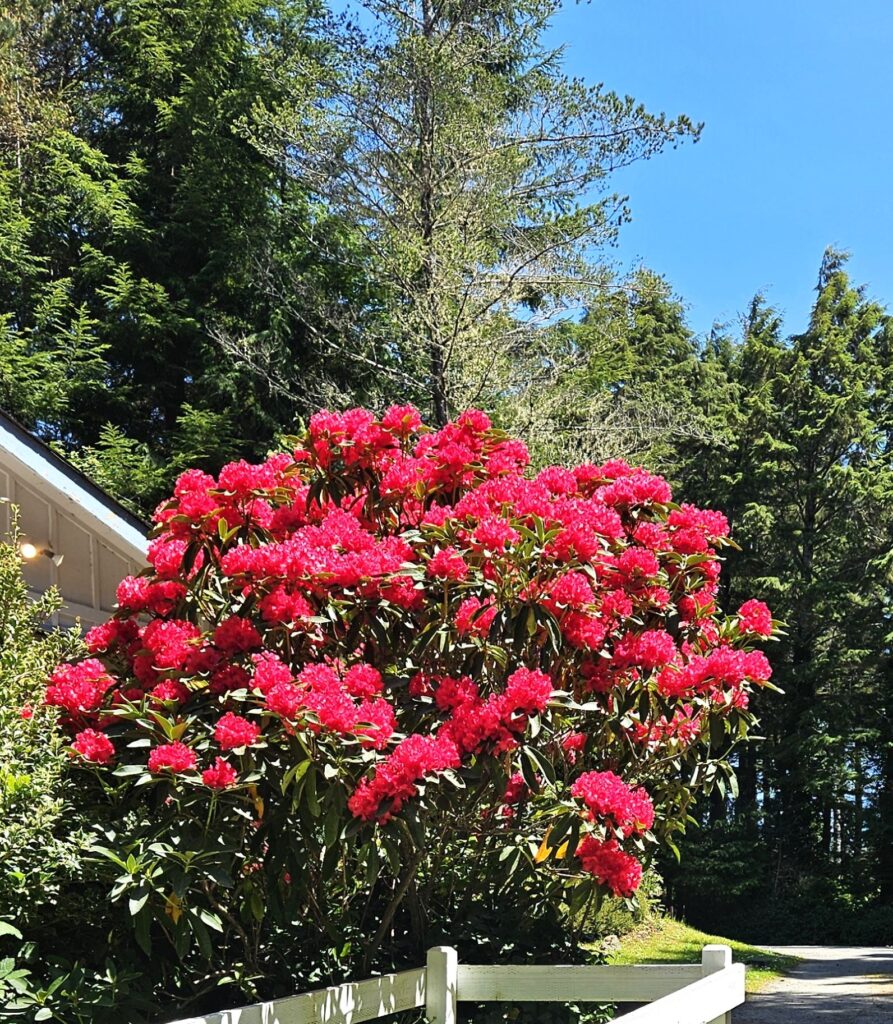

Another day while in Florence, Oregon, we drove a few miles out of town to Darlingtonia State Natural Site. It is an 18-acre botanical park with a boardwalk trail to a fen that is home to the plants called Darlingtonia Californica. They are more commonly known as a cobra lily.
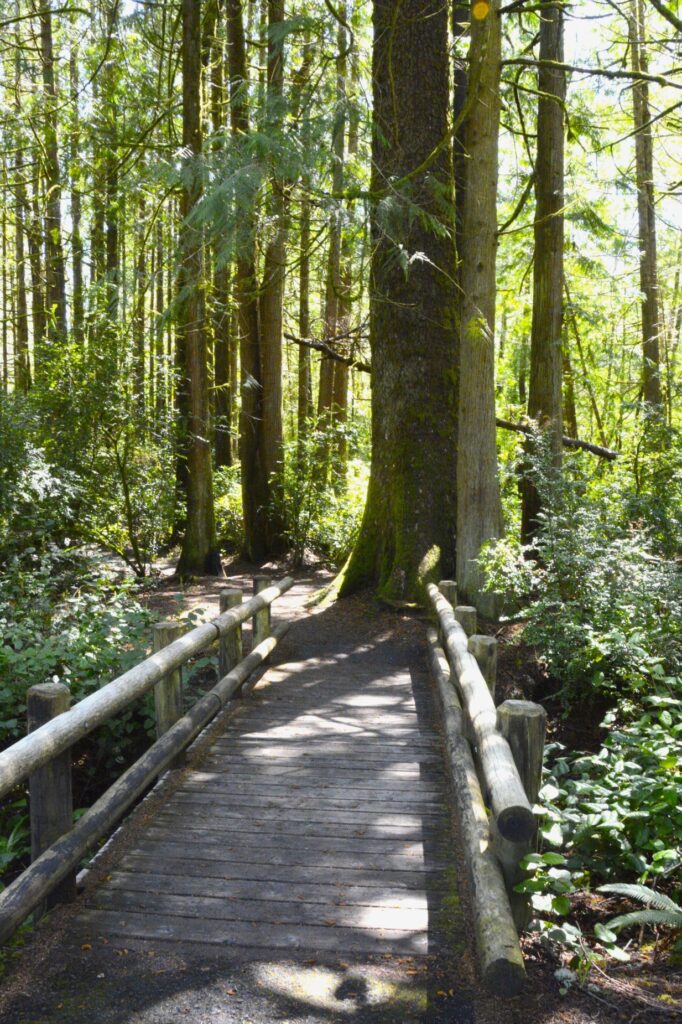
These strange plants are members of the pitcher plant family, i.e. insect-eating plants. They attract insects with nectar through an opening. Before the insect figures out what is happening, they are trapped. Then they are digested by the plant.
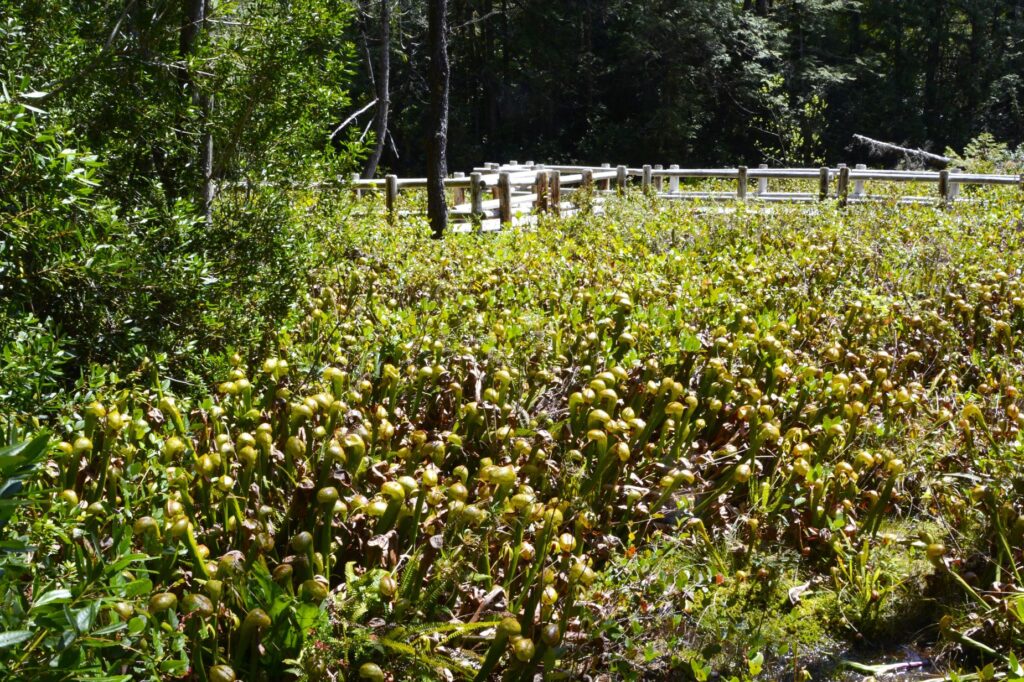
They are fascinating plants and are protected by the state of Oregon.
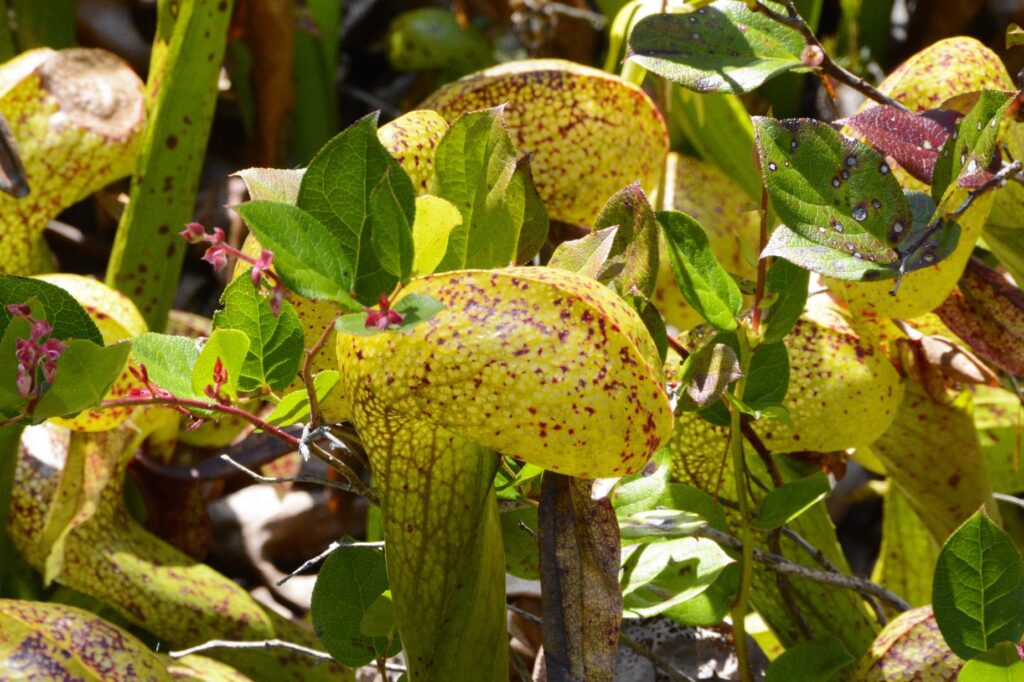
It rained so often that when the rain stopped, it was nice to get out in the sunshine. One such day, we took a short hike around part of Lily Lake in Jessie M. Honeyman Memorial State Park, a mile or so from our campground. You can see the sand dunes in the background.
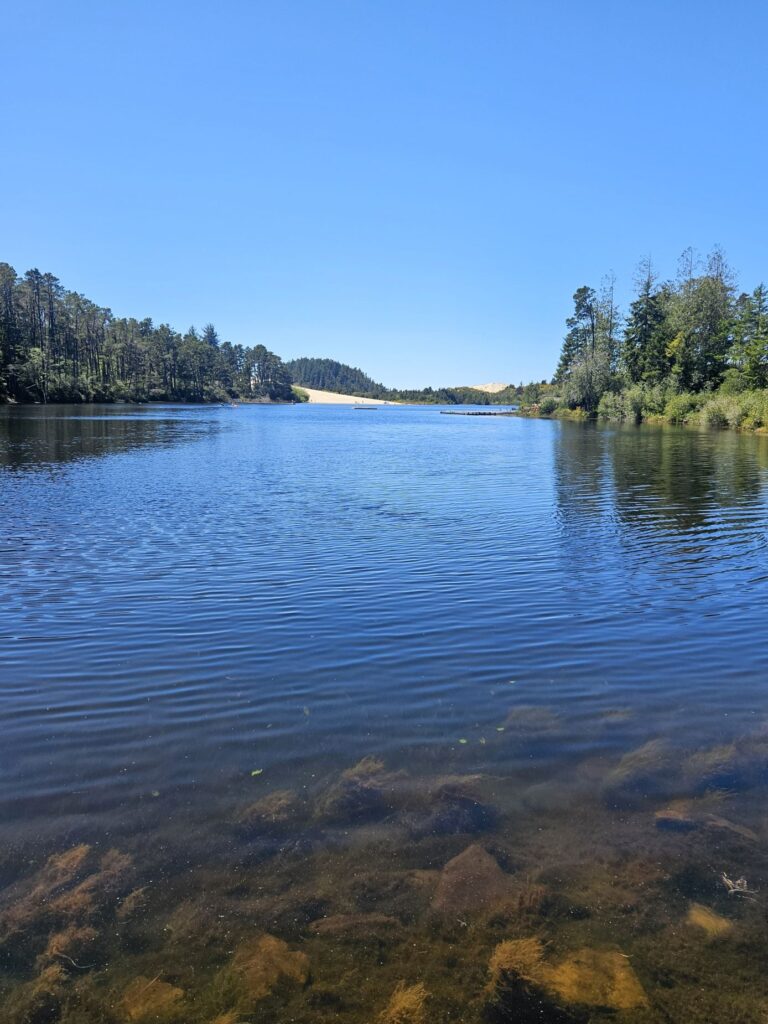
The water was clear and cold. As we walked on the pathway around the edge of the lake, we came to a boggy area where water lilies grew. Some of them were in bloom. I wanted to take photos of them, but there was a huge spider web blocking my way. Ray got a stick and removed it so I could get my photo. I felt sorry for destroying the spider’s home, but there was no way I was going to lean over it to get a photo.
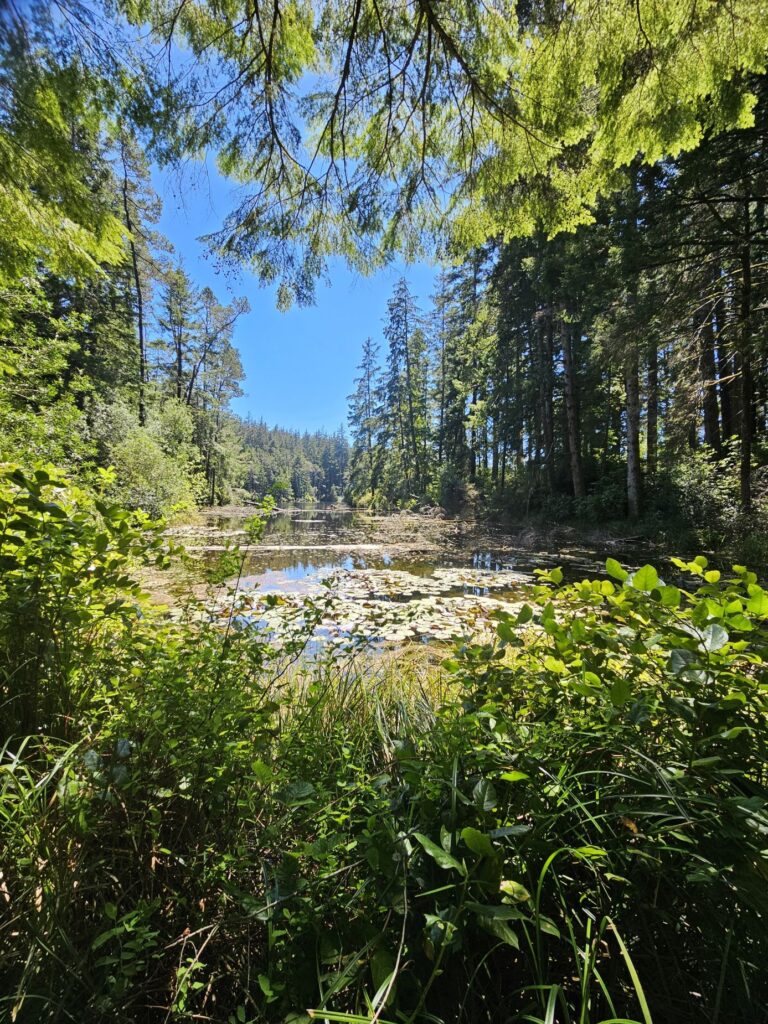
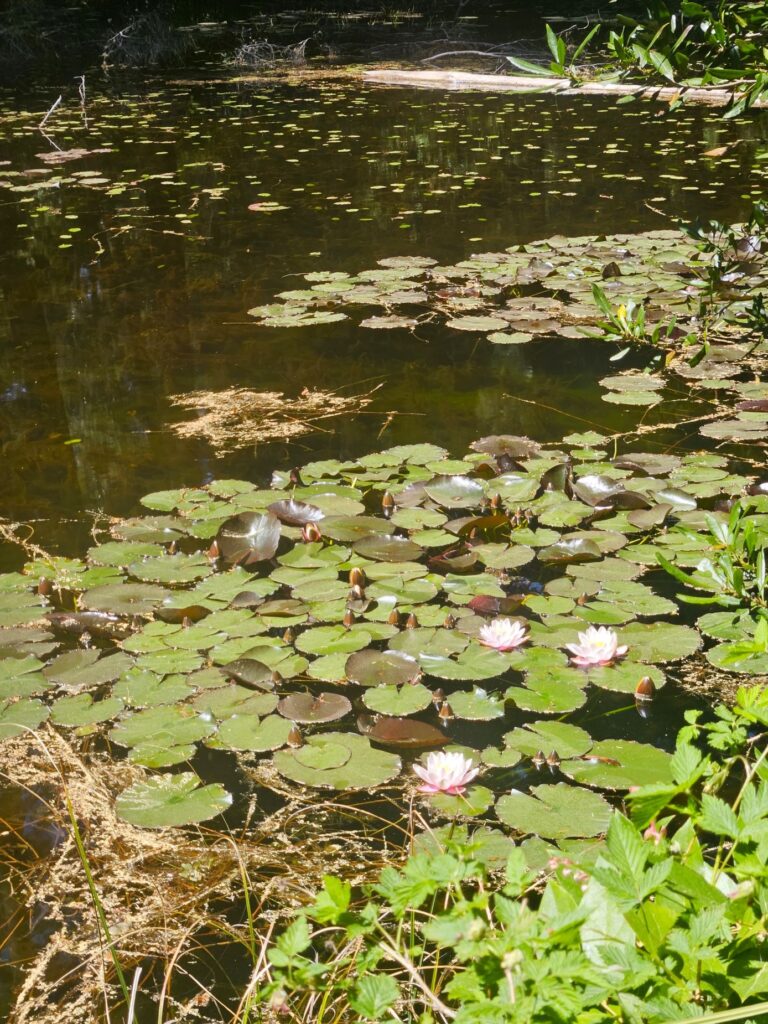
The sun was hot and the bugs were abundant, so we turned around and went back home. Even though it rained a lot, we enjoyed our visit to Florence, and the central coast of Oregon.
“O Lord, what a variety you have made! And in wisdom you have made them all! The earth is full of your riches. There before me lies the mighty ocean, teeming with life of every kind, both great and small.” Psalms 104:24-25
